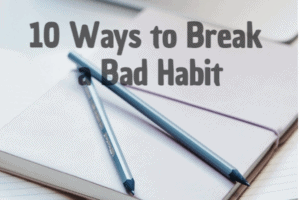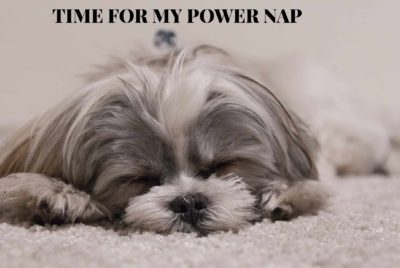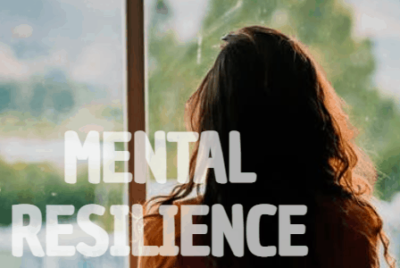10 Ways to Break a Bad Habit
Habits are the small choices we make and actions we do every day. It begins with a mental pattern called a “habit loop,” which consists of three steps:
- A trigger, a cue, a prompt that tells our brain to go into automatic mode and let a behavior unfold.
- The routine, which is the behavior itself.
- The reward, something that our brain likes, helps it remember the “habit loop” in the future.
According to Psychology Today, a habit is something we do automatically – a response or behavior without which we feel unfulfilled, drained, or unsettled. Habits begin with a trigger and release a set of automatic behaviors unconsciously. An example of this is biting our nails. When our mind focuses on one repetitive action, such as biting our nails, certain parts of the brain ignite chemicals. It becomes more difficult to focus on other things because the brain has been bombarded with stimulation.
The beginning of a habit is formed through repetition. In the process of repeating actions or thoughts that lead to a habit, you are teaching your mind to cue automatic responses reliably. As the author of The Power of Habit says, “Put simply when the brain senses consistency – it lets go.” The initial step in breaking a bad habit is spotting one. Allow yourself to become aware of your daily routines and the thoughts and actions you repeat over and over again.
There are various personal reasons why you might be considering breaking a bad habit. Maybe you know it’s affecting your health, or someone has told you it’s not the right thing to do. You might feel like the habit is no longer serving you in some way.

Whatever your reason, here are some ways to break a bad habit for good:
1) Keep track of your progress and celebrate small wins.
You owe it to yourself to keep track of what you are doing to change your habits. Commit yourself and write down the date, time, place, or practice you broke the habit of.
2) Stop doing it.
If you’re simply aware that you’re involved in a habit loop, stop the action. If you know what triggers your behavior, stop going there. If you know what rewards you get from the habit, stop using those rewards.
3) Replace the old bad habit with a good one.
Pick one good behavior that you can do in conjunction with the old bad behavior. If you are trying to stop the habit of watching television, go for a walk or do something creative and fun instead of watching television. After a while, your brain will begin to associate this new action with your old bad one, and you will eventually replace it with this new behavior.
4) Do it again and again.
You need to repeatedly do the new behavior that your brain keeps associating with the old habit. This will break the association. If you do this long enough, you will eventually replace the old habit without even trying.
5) Identify the negative consequences that come with the bad habit.
You need to sit down and think of the pros and cons of this bad habit. Once you recognize how it is negatively affecting your life, your health, your happiness. This will motivate you to start the change, look for a better alternative.

6) Get rid of your cue or trigger.
If you encounter a trigger, do something else instead of following through with your bad habit. For example, if you have a cookie every night after dinner, go for a walk instead or do something else that will get your mind off of eating.
A bad habit is a behavior you do without thinking that becomes an uncontrollable reflex. Removing the cue or trigger is often the first step in breaking a bad habit. When you have an ice cream cone every day for lunch, eating it will become automatic and require no thought effort. You can remove this pattern by not having the ice cream cone or waiting until after 1:00 pm to eat it. If you want to kick a smoking habit:
- Could you remove it from the situation? You can only smoke in certain situations; make sure you are not in those situations.
- If you want to eat healthier, get healthier foods at the store.
- Do not buy unhealthy food until it is out of your house completely.
7) Become the habit creator.
This is the toughest step but also the most powerful. If you replace a bad habit with a good one, your brain will eventually see that behavior as the new norm, and it will be harder to break your new, good habit. But suppose you force yourself to create a new behavior in place of the old habit. In that case, your brain will be reprogrammed into thinking this new behavior is normal and natural (like going for a walk instead of watching television).
8) Change your routine.
If you think about eating an ice cream cone every time before lunch, change your routine before lunchtime and do something else for 20 minutes before eating lunch. This helps to break the habit.
Have new routines and get rid of old routines that were associated with bad habits. So having a new routine will help you break an old habit.
Often, if you do this enough, the old habit will be replaced with a new habit that becomes more natural to you, and you will not even realize that you created it in the first place. This is why it’s important to be mindful throughout this process as your brain gets reprogrammed into a new habit.
9) Associate a positive behavior with the habit.
If you have trouble eating healthier, make sure you reward yourself for eating healthier when you do it. This will help associate the positive behavior with the situation, so your brain will be encouraged to do it again.
Continue to practice whenever you have some free time until the new behavior becomes so normal that it looks like something you do without thinking.
You are not trying to create a new habit overnight. You are simply trying to break an old one until it’s replaced with a new one that is so normal, you don’t even think about doing it.
10) A final way to break a bad habit is to have self-control.
Take control of the situation before it becomes out of control. You can get rid of a bad habit by having self-control and making up your mind that you no longer want to do the action or act on it again. If you want, you can create multiple good habits in place of the bad habit.
For example, if you try to avoid coffee, you can replace the bad habit with a good one – like going for a walk instead of drinking coffee. Then you can create another new habit – like going for a walk after you drink coffee. Then make a third good habit – like walking after you have had dinner. Once you have created multiple small habits, it will be easier to replace the bad habit and make the new good ones “stick.”
In Summary
Just as it takes time to form a habit, it also takes time to break a habit. Acceptance is the initial step towards achieving a positive change of behavior. Acknowledge that your current habits are the sum of the choices you’ve made in the past and are based on past experiences, emotions, and motivations. Realize that integrating new habits can change the sum of what you do.
My bad habit took me about a year to develop, and it has taken me about one year to break them. If you truly want to develop good habits, you must remember that it requires dedication and hard work. Don’t get discouraged when your old habits surface; instead, recognize these actions as opportunities to strengthen your resolve.
We all have bad habits that are not serving us well. The key is to identify these bad habits and replace them with good habits. If you truly want to develop good habits, you must remember that it requires dedication and hard work. Don’t get discouraged when your old habits surface; instead, recognize these actions as opportunities to strengthen your resolve. Lastly, most importantly, take care of yourself. Develop good nutrition, get plenty of sleep, and take time out to relax. This will assist in your daily routines of eating healthier and exercising.
A well-known coach once told me, “If you are not failing every day, it’s a lie. If you are not failing right now, that can only mean you will not try anything new or take any risks. And if you are not failing at something, then what learning can there be?” The same applies to being healthy. If you’re not failing again and again, then perhaps what you’re doing isn’t working. The chief way to improve is to keep trying different things until you find the ones that work for you.
Failing is hard, but it’s life’s greatest teacher. Without failure, how would you know when something isn’t working?





My relatives always say that I am wasting
my time here at web, except I know I am getting familiarity
daily by reading thes pleasant articles.